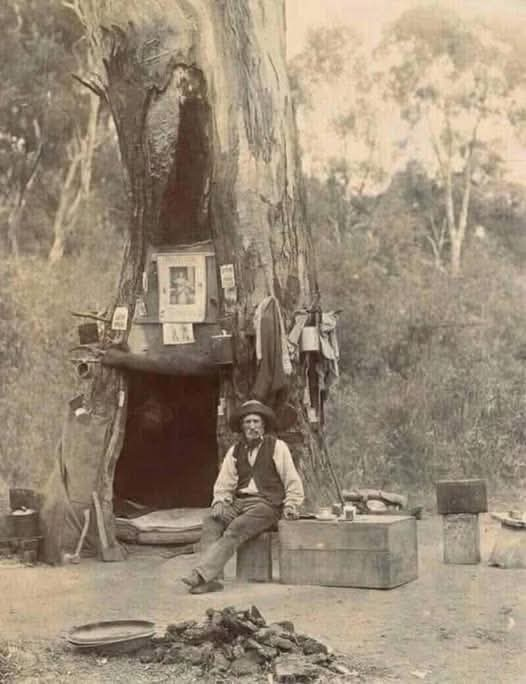In the late 19th century, the Australian swagman became an iconic figure of the Outback, living a life of mobility and self-sufficiency as he roamed the vast and often unforgiving landscape. Around 1880, a swagman is captured using a hollow gum tree as a campsite, a testament to the resourcefulness and adaptability of these wanderers. The gum tree, a symbol of Australia’s natural environment, provided shelter and protection, offering a rare refuge from the harsh elements of the bush.The swagman’s life was one of constant travel, as he moved from one town or settlement to another in search of work or opportunity. The hollow gum tree, with its protective bark and hollowed-out trunk, served as a makeshift shelter, allowing the swagman to rest and recover from long days of walking. It was a humble yet effective solution to the challenges of living in the wilderness, as these makeshift campsites were often the only refuge available to those far from civilization.This photograph not only captures a moment in the life of a swagman but also serves as a symbol of Australia’s colonial past, highlighting the resilience and endurance of its people. Swagmen like the one pictured in this scene were part of a larger narrative of exploration, hardship, and survival, and their stories became embedded in the nation’s folklore. The hollow gum tree, as a symbol of both the land and its people, offers a glimpse into a rugged way of life that was both challenging and deeply connected to the Australian landscape.
